Asphalt pavements are one of the most widely recycled products in the world. Most of that recycling happens by reclaiming pavement material as RAP after it has been milled and removed from the site. But it’s also possible for recycling to happen without the material ever leaving the project site. In this edition of the RoadReady newsletter, we’ll take a look at in-place recycling, which covers different strategies for reusing existing pavement material on site as part of a construction project. Depending on existing pavement conditions, such as the level of pavement distress, in-place recycling may be a possibility for pavement preservation or rehabilitation.
There are three major techniques for in-place recycling of asphalt pavements:
- Hot in-place recycling (HIR)
- Cold in-place recycling (CIR)
- Full-depth reclamation (FDR)
Each of these approaches uses its own equipment train to recover and recycle the existing pavement material as part of the paving process. The equipment builds on a normal paving train, with the addition of specialized machinery related to the recycling process in question.
Hot In-Place Recycling
Construction processes involving hot in-place recycling all use a specialized form of mobile asphalt plant set up to work in a continuous train with a standard paver and compaction equipment. The recycling process in HIR can be handled using one of three approaches:
- Surface Recycling. Propane or diesel heaters are used to heat the insitu pavement surface, after which it is scarified with a bank of spring loaded tines. A polymer modified rejuvenating agent is then introduced into to the softened existing asphalt before the recycled mix is blended, shaped and recompacted.
- Remixing. The pavement is heated and the existing surface layer removed by grinding or milling. In addition to a rejuvenating agent for the existing binder, virgin aggregate or plant mixed asphalt (up to 30%) is added so that the resulting pavement is partially recycled and part new material. Often this sub-discipline of HIR does not require an additional wearing course.
- Repaving. After heating, scarifying and rejuvenating the insitu hot mixed asphalt material; the recycled mix is placed as a leveling course using a primary screed, while simultaneously placing a thin overlay of fresh asphalt mix in a unique dual screed method. The combined homogenous layer is then compacted using conventional compaction equipment.
Remixing and repaving options will allow for grade control and provide better mixing of additives with the recycled mix.
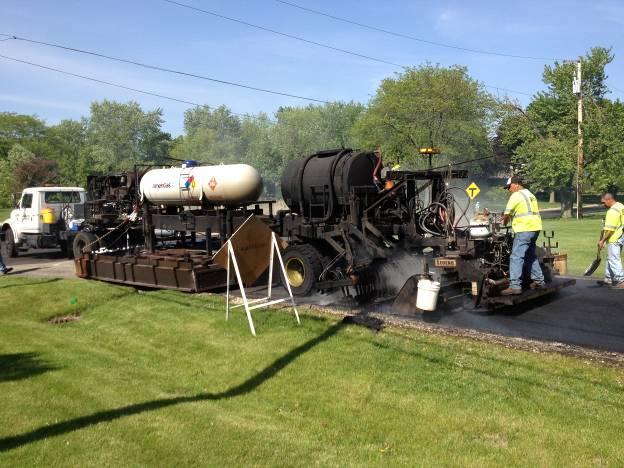
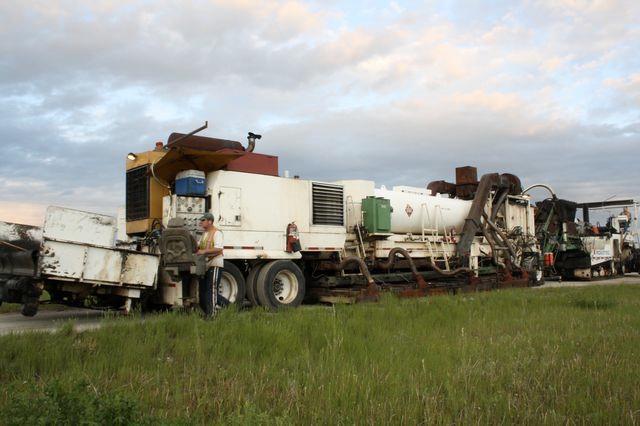
Best Use Scenario for HIR
HIR is the recycling process that comes closest to replicating the production and placement of hot mix asphalt, so it may not always require an additional overlay. Since HIR is only performed to a depth of about 1 to 3 inches, it will only correct surface distresses in the pavement. It may also be limited in application depending on the characteristics of the existing material. A good candidate for HIR could be a pavement with minor surface defects such as bleeding or raveling. Worth noting is that in any of the bituminous in-place recycling operations, twice the crack mitigation as compared to conventional HMA overlays is to be expected.
Cold In-Place Recycling
For cold in-place recycling, the pavement surface is not heated; it is simply milled to a depth of about 2 to 4 inches. The cold milled material is then put through a single unit train, dual unit train, or a mulit unit train that adds screening and crushing units to it to produce the desired gradation. Virgin aggregate can also be added to the recycled material if enhancements mix characteristics are desired. For example, in the case of an existing pavement with excessive rounded gravel fractions, cubicle shaped aggregate may be added to the CIR mix to increase rut resistance to the final pavement section.
Next, the millings are put into a pugmill mixer so they can be mixed with a binding agent, such as polymer modified emulsified asphalt. Other additives can also be mixed in for stabilization, or to improve durability and strength. The recycled mix is then fed into the paver, after which it is laid down and compacted similar to conventional hot mix asphalt paving. If an emulsion was used, compaction is typically delayed until the emulsion begins to break. Note that foamed asphalt is also used extensively in the CIR operations much like it is in the FDR operations listed below.
CIR produces a granular mix that can function like high-quality gravel. On a low volume road, a CIR process may be suitable for a surface course if a treatment such as a fog seal is applied on top of the recycled mix. For higher volume roads, the recycled pavement should be treated as a stabilized base and a thin asphalt overlay placed on top. Generally, most applications will require a wearing course of some type.
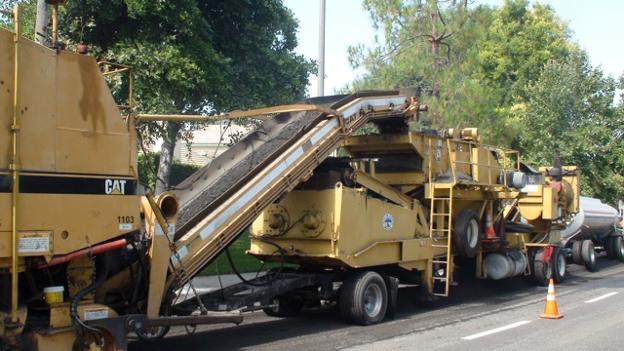
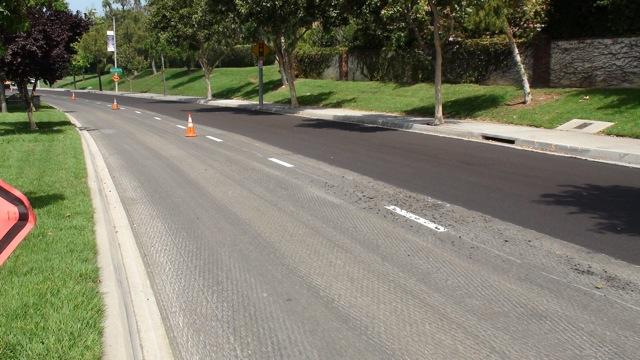
Best Use Scenario for CIR
CIR is best suited for structurally sound pavements exhibiting moderate levels of distress, such as block cracking. The depth of recycling for a CIR process is sufficient to correct these issues if the base and subgrade are sound and well-drained. In order for additives to set properly, CIR work may have to be limited to sunny and dry conditions in certain regions of the Country.
Full-Depth Reclamation
Full-depth reclamation effectively takes the principles of CIR and applies them to a process in which the entire asphalt pavement is recycled. This is accomplished by having a road reclaimer pulverize the existing pavement to a predetermined depth, typically between 6 and 12 inches. Pulverization should extend at least one inch into the underlying granular base material.
During pulverization, additives and stabilizing agents are mixed with the recycled material. Water is also added for moisture conditioning and to assist in achieving the required density. The equipment train may include a separate truck to supply water and additives, or the road reclaimer may be equipped to add these materials directly.
Once it has been processed, the recycled mix is then shaped with a motor grader. The grader can also make any profile and cross-slope adjustments that are needed. Compaction may be performed using some combination of a padfoot roller and conventional asphalt pavement rollers. The rollers will help produce a consistent density in the mix and seat any loose aggregates left behind during shaping to create a smooth surface.
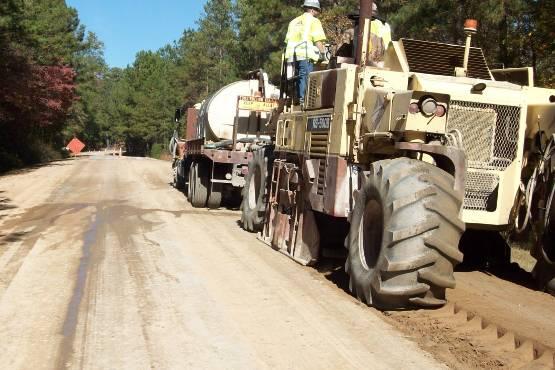
Best Use Scenario for FDR
The FDR process produces a thick stabilized base course that requires a surface treatment or overlay. It can be used on pavements that have fairly severe distresses because the entire pavement is being recycled. Pavements may still be good candidates for FDR with moderate to severe fatigue cracking, potholes, or rutting. Additional work would be needed, however, if deficiencies extend into the base and subgrade below the depth of material being recycled. However, in this case the same equipment can also be used to provide soil stabilization, all at a fraction of the cost of conventional undercut.
Benefits of In-Place Recycling
In-place recycling is a solid strategy that should be considered as an option for maintenance and rehabilitation treatments. Like any good recycling effort, it helps conserve energy and protect the environment. It can also reduce the need for virgin aggregate and asphalt binder, leading to lower construction costs. When used appropriately, it may be able to reduce user delays due to construction. In the early 2000s FHWA released a memo to its engineers that asked them to “explicitly consider asphalt recycling in the design of every project”, and with these processes being green, faster and less expensive, this memo makes perfect sense in today’s economy!
Each of the major in-place recycling techniques above has unique variations, characteristics and suitable applications. Use them wisely and we can help our pavements go even farther. Despite which method of eco efficient in-place asphalt recycling technique you decide to employ, your agency’s biggest bang for your buck will be to combine green rehabilitation techniques such as those listed above, a proactive pavement preservation plan and a comprehensive pavement evaluation plan.
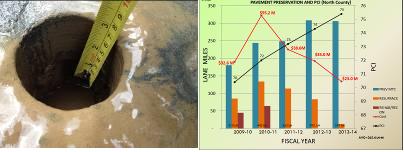
According to Blair Barnhardt, Founder and Executive Director of IPMA, “It is only when these three elements are married together into a modern day pavement management approach will America and the World be able to resurrect our failing infrastructure”. For details on how to learn more or to get involved with The International Pavement Management Association please visit www.ipma.co.

